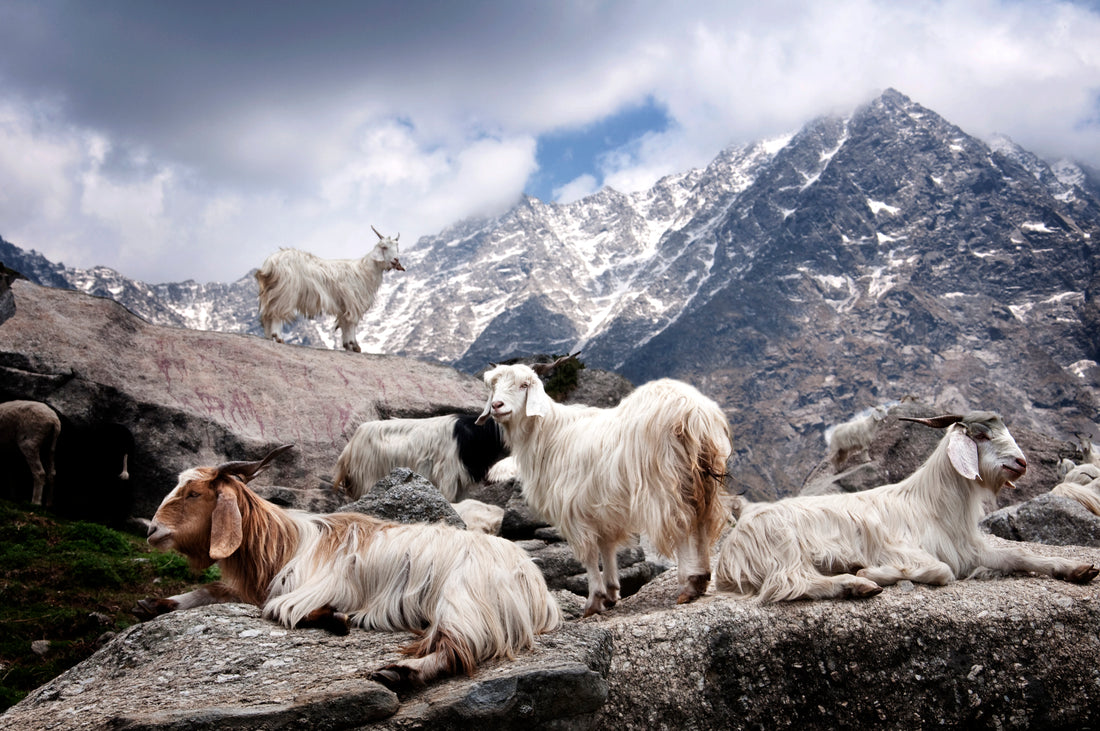
Cashmere: From Inner Mongolia to You
Share
Cashmere—real cashmere—is one of the most luxurious fabrics in the world. Incredibly lightweight and breathable, it’s superbly soft against your skin. The finest cashmere fabric also comes with a high price tag. Once you know how it’s made, you can see why. Pure, high-grade cashmere fabric is actually a tribute to the patience and resilience of people and animals living high in the Himalayas.
Not Just Any Goat Will Do
Cashmere wool comes from Kashmir goats, Capra hircus. Today, the world’s finest cashmere wool comes from Inner Mongolia, with fine cashmere wool also coming from China, Tibet, and Ladakh. The best wool results from goats living at high altitude and in extremely cold winters. Kashmir goats have two coat layers. The long, coarse outer layer protects them from the elements while the ultra-fine undercoat retains the animals’ warmth. The colder the winters, the finer the goats’ undercoat. In the spring, shepherds hand-comb off the long outer hairs and finer undercoat hair. The fibers are then separated by hand, and only the undercoat is used to make cashmere fabric.
Quantities are Limited
Each goat produces only a few ounces of cashmere wool each year. The entire global annual production of cashmere wool is about 11 million pounds—a fraction of the world’s annual (sheep) wool production of 4.3 billion pounds. Of that cashmere wool, only a fraction is the highest quality.
Only the Best
Cashmere wool quality is determined by the width of the individual undercoat hairs. There are three grades:
• Grade A: The finest and most expensive, at 14 microns in width and 36 mm in length
• Grade B: 19 microns wide at shorter lengths
• Grade C: 30 microns wide at shorter lengths
How do you know the grade of cashmere used in your garment? It’s hard to tell, unless the manufacturer explicitly labels the fabric. The finest-grade cashmere fabrics have an incredibly soft touch to your fingertips. They’re elastic, recovering their shape after being stretched. Pure, high-quality cashmere is also durable and resistant to pilling. If a sweater, fabric, or blanket supposedly made from cashmere feels itchy, it’s not cashmere.
DandyLion uses 100% cashmere deadstock for its cashmere textile products. For example, we’ve chosen Zegna cashmere deadstock for use in selected textiles. Not only does Zegna offer some of the world’s finest cashmere, the company is committed to a zero-waste philosophy. Through their #UseTheExisting program, they aim to reduce final waste, starting with fabrics. Which fits right in with our approach—it’s why we can reuse top-quality remnants to bring you the world’s finest quality, affordably.
